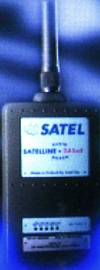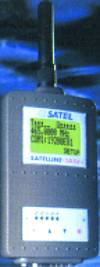

Use of wireless telephony technologies such as DECT and GSM is growing more rapidly than the traditional fixed copper line telecommunication. Not only are base stations and networks easier and less costly to roll out, but they are infinitely more flexible. GSM provides for total mobility in terms of reception while a DECT system can be simply relocated through moving the receiver/transmitter.
At the forefront of wireless data transfer technology is a Finnish company called Satel Oy (Satel) which manufactures radio modems designed for industrial wireless data communication. These modems can be used in a wide range of applications including industrial automation and process control, monitoring and control of energy/water systems, and traffic control. They are suited for both mobile and fixed applications and even in the case of the latter can be redeployed with only new power cabling required.
Satel SA is the South African representative for Satel Oy and is run by sales director Mark Dilchert. All the company's technical staff have been trained in Finland and have realtime communications with experienced applications engineers at the factory. Amongst the wireless data transfer products offered is the SATELLINE range of radio modems.

The most common and versatile models for industrial applications are the SATELLINE 3AS and 3ASd. Here, the transmitter power allows communication over distances in excess of 10 km. The 3AS range is compatible with the three most widely used data interfaces: RS232, RS422 and RS485 (lower spec products with only an RS232 interface are also available). The 3ASd differs only in that it is equipped with a user-interface LCD display and can be configured without a PC/terminal using its push-button controls. The display on the 3ASd can also be used for testing of the operating condition of the radio connection with any other radio modem. These units weigh only 250 g, can operate with a 12 or 24 V power supply, and consume 1,8 or 6,0 VA power (receive or transmit mode). In terms of physical size the 3AS devices are similar in size to first-generation cellphones. Data transmission rates can be up to 19,2 Kbps at a radio frequency between 380 and 470 MHz.
While the standard 3AS has a power output of between 10 mW and 1 W (depending on the distance between source and receiver), the top of the range product, the 3AS Epic, operates at up to 10 W and can communicate reliably over distances in excess of 40 km. The Epic is compatible with the same range of interfaces and is also programmable in the same way as the 3ASd. It also offers 'diversity reception' whereby the modem itself selects the best signal from those received, improving reliability of connections where reflections cause fading. Despite enhanced performance, the Epic weighs only 550 g.
Another addition to the SATELLINE family is the 1870 that uses the Pan-European free 868 to 870 MHz frequency band. As a result of limited power output the communication range of the 1870 is limited to between 50 and 500 m, depending on surroundings. As with all the Satel radio modems this range can be extended through use of repeaters. The 1870 uses RS232.
For modem use in the field, the company has the SATEL-321 product, which is a waterproof battery package into which standard radio modems (such as the 3AS/d) can be fitted. The system is capable of operating for up to 10 hours without recharging while the all-up weight, including the modem, is 1000 g.
For more information contact Mark Dilchert, Satel SA, 011 887 2898 [email protected]

© Technews Publishing (Pty) Ltd | All Rights Reserved